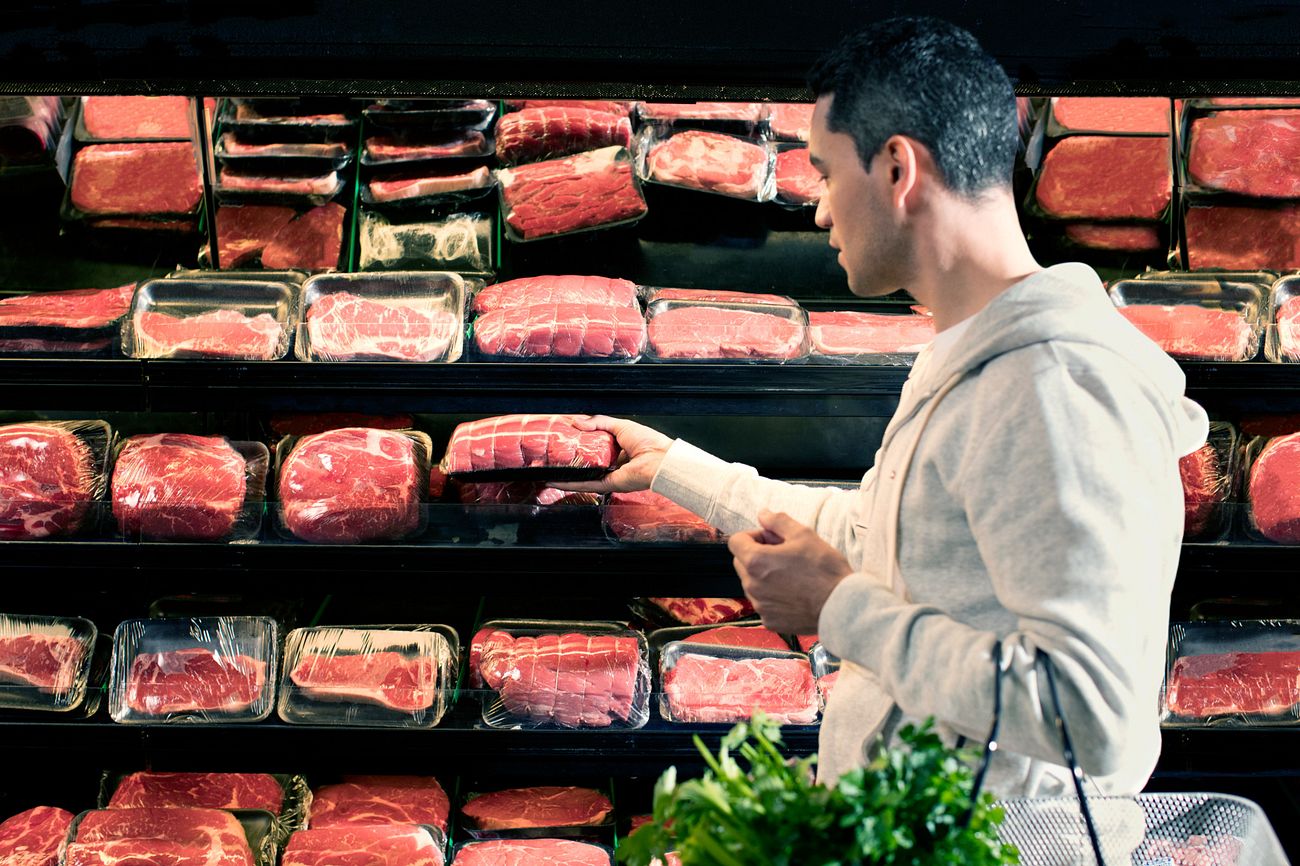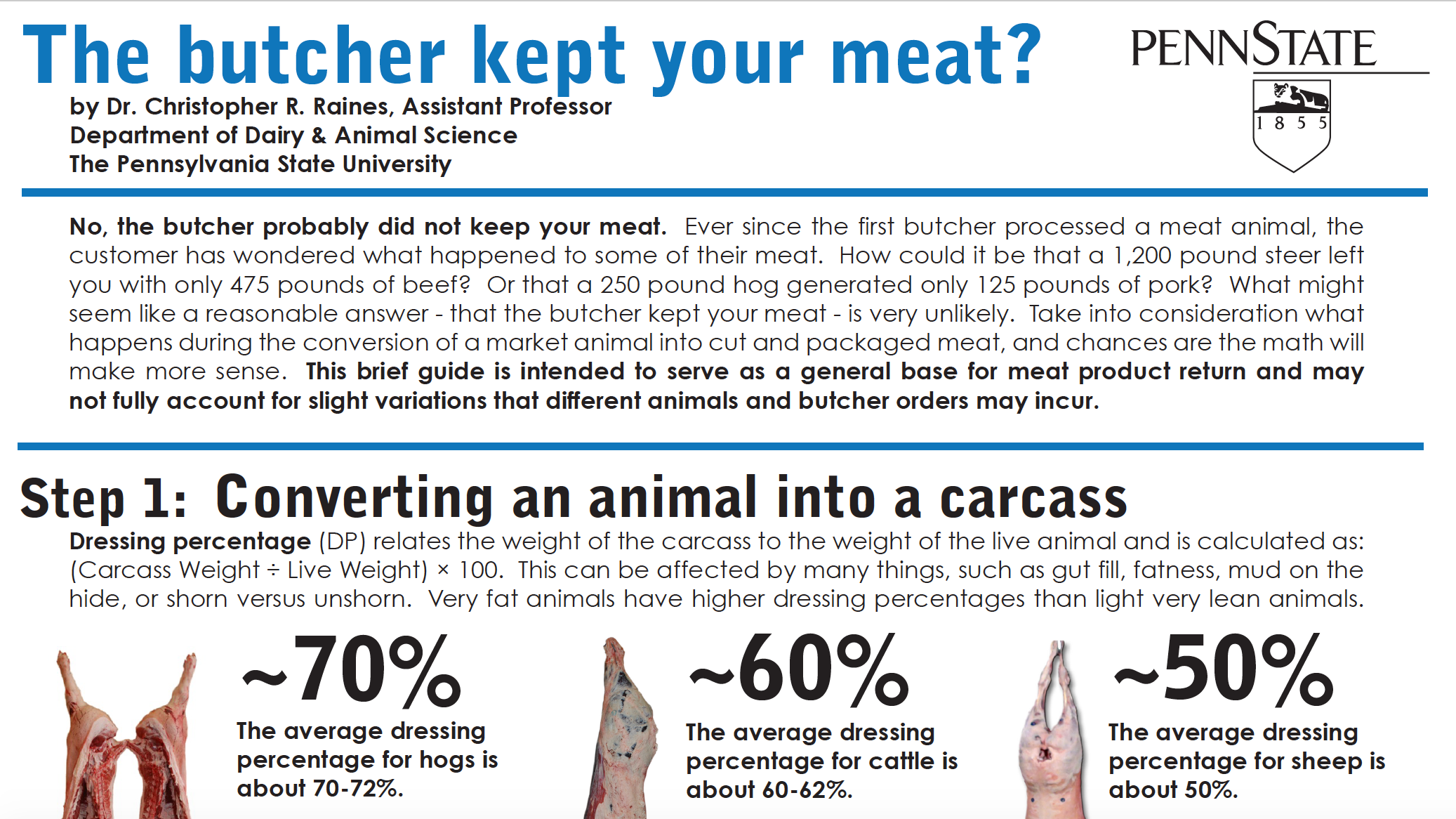Ordering Beef
Here are some tips to help you have a successful ordering experience!
Grocery Store
Pre-Order Special Cuts
Do you sometimes have trouble finding your favorite cut in the meat case? Call the store meat manager and ask to order in bulk. If they can't get a specific cut in, they may be able to point you in the right direction.
Grocery Store
Ask for Specifics
Is the store out of ground beef? Want special 2 inch steaks? You can ask the meat department to cut a roast into steaks or grind it into ground beef. They will often do this free of charge.
From a Local Farm or Local Processor
There are a few extra things to consider if you decide to buy your beef from a local source.
Buying Local Beef
Before You Buy
Before you decide to buy beef from a local farmer/producer or processor, make sure that the processing facility is inspected. This is required by law!
Additionally, if you buy from a farmer's market, ask the farmer how he or she ensures that a safe temperature is maintained from the farm to the farmer's market booth. Sometimes those booths get quite hot in the summer! They should be using a thermometer to ensure their coolers are maintaining beef at below 40° F. Beef should also not be frozen, thawed, and frozen again.
Buying Local Beef
Try It Before Committing to a Large Order
Many local sources offer a sampler package. If you are considering buying a side of beef, start with a sampler or a few cuts first. At a grocery store, beef has a consistent quality and flavor. However, with local choices, you may find you don't like the taste of a particular farm. Or perhaps you've never had grass-fed beef before. Make sure you like the quality and taste of the product before investing in an entire animal, or even one side of beef.
Buying Local Beef
Understand the Anatomy
For example, there is only 1 hanger steak per cow. And, did you know that Porterhouse and T-bones are almost the same cut? The Porterhouse has slightly more tenderloin in the cut than a T-bone. Because the tenderloin is part of both cuts, you may have to choose between having tenderloin (also known as filet mignon) OR having Porterhouse steaks. Additionally, steaks often are cut from roasts. Make sure to ask your butcher to help you understand when you have to make a tradeoff decision. Often, they can cut a small roast and a few steaks, or make all of that cut into steaks, based on your preference.
Buying Local Beef
Understand the Quantity
Before you buy an entire quarter, side, or whole beef...are you sure you have the storage space? A whole beef, on average, yields about 475 pounds of beef.
Do you have a plan if the power goes out in your big freezer, so you don't lose all that meat and the money you invested in it? Can you use all of the meat within the recommended maximum freeze time? Answering these questions beforehand can save a lot of headache and ensure you get the most for your money!
Buying Local
Did the Butcher Steal Your Meat?
There are several variables that determine how much ground beef you get, and how many total pounds of meat you get when you buy in bulk. This is a great resource to help understand how a 1,200 lb. animal yields around 475 lbs of beef.

